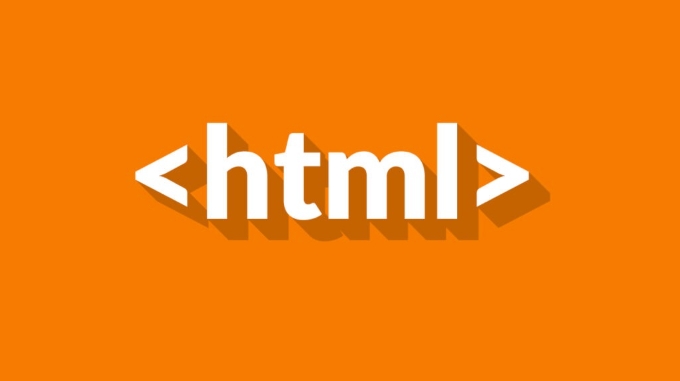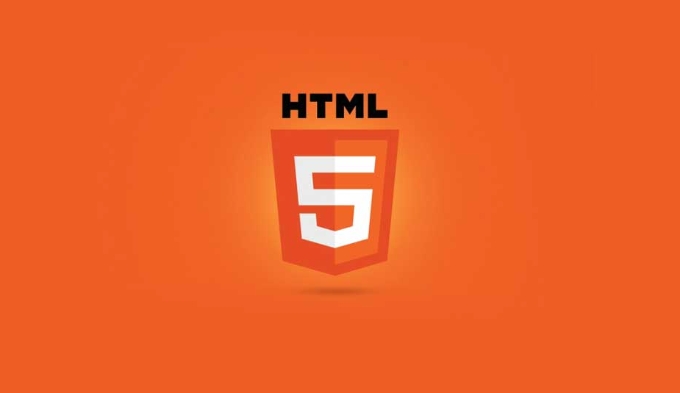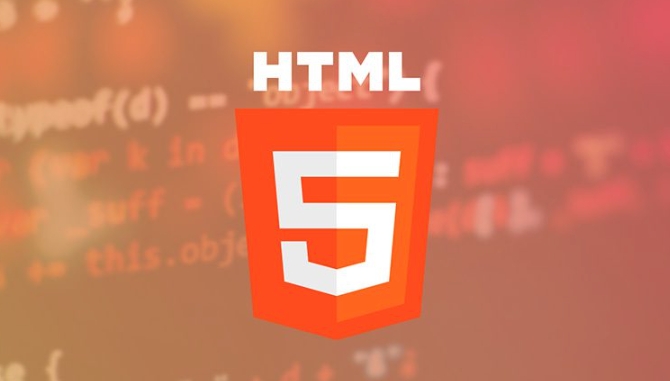 Web Front-end
Web Front-end
 HTML Tutorial
HTML Tutorial
 How do you manage keyboard focus with the tabindex in html attributes?
How do you manage keyboard focus with the tabindex in html attributes?
How do you manage keyboard focus with the tabindex in html attributes?
Jun 28, 2025 am 01:55 AMWhen managing HTML keyboard focus using the tabindex attribute, you should prioritize natural order and ensure accessibility. First, understand the three valid values ??of tabindex: 0 means that it can be focused in the order of the document; -1 means that it can only be focused through scripts; positive numbers mean custom focus order (not recommended). Second, add tabindex="0" and appropriate ARIA roles to non-form elements for keyboard access. Third, avoid using high positive values ??to disrupt the natural order, and the order should be controlled by adjusting the HTML structure. Fourth, use tabindex="-1" when you need to control the focus of the program, such as automatic focus after the modal box is opened. Finally, always test the keyboard navigation to ensure availability.

Managing keyboard focus in HTML is important for accessibility and usability, especially for users who navigate using a keyboard. One of the main tools you have for this is the tabindex attribute.

Here's how to use tabindex effectively to manage focus behavior on your web pages.

Understanding the basics of tabindex
The tabindex attribute controls whether an element can be focused and how it behaves in the tabbing order.
There are three valid values:

-
tabindex="0"— Makes the element focused in the natural tab order (based on source order). -
tabindex="-1"— Makes the element focusable only via JavaScript or programmatically (not reachable by tabbing). -
tabindex="n"(where n ≥ 1) — Adds the element to the tabbing order explicitly, with elements ordered based on their number. This is generally discouraged because it can confuse users and break expected navigation flow.
Use tabindex="0" when you want to make a non-focusable element (like a <div> or <code><span></span> ) accessible via keyboard. Use -1 when you need to focus something temporarily, like focusing a modal after opening it.
Making custom components keyboard accessible
Sometimes you're building interactive UI components that aren't standard form elements — think tabs, dropdowns, or buttons made from In these cases: For example: This makes the div both focusable and usable with a keyboard, improving accessibility without relying on JavaScript just to enable basic interaction. One common mistake is assigning high positive It breaks expectations and creates confusion. Instead: If you must adjust the tabbing sequence, consider reordering the HTML structure instead of manipulating You'll often use This keeps the element out of the natural tab flow but still allows programming access. A simple example: Then in JS: That's the core of managing focus with Basically that's it.
tabindex="0" so the component can receive focus.role="button" if it acts like a button). <div role="button" tabindex="0">Custom Button</div>
Avoid disrupting natural tab order
tabindex values ??(like tabindex="5" ), which forces users to tab through elements in an unnatural sequence.tabindex="0" to include otherwise non-focusable elements.tabindex="-1" if you need to focus something later via script (like bringing focus back after closing a dialog).tabindex . When to use tabindex="-1"
tabindex="-1" in situations where you want to control focus via JavaScript. For example: <div id="modal" tabindex="-1">This modal will get focus via JavaScript.</div>
document.getElementById('modal').focus();
tabindex . It gives you control without breaking accessibility when used correctly. Keep it simple, avoid unnecessary overrides, and test with a keyboard to make sure everything works as expected.
The above is the detailed content of How do you manage keyboard focus with the tabindex in html attributes?. For more information, please follow other related articles on the PHP Chinese website!

Hot AI Tools

Undress AI Tool
Undress images for free

Undresser.AI Undress
AI-powered app for creating realistic nude photos

AI Clothes Remover
Online AI tool for removing clothes from photos.

Clothoff.io
AI clothes remover

Video Face Swap
Swap faces in any video effortlessly with our completely free AI face swap tool!

Hot Article

Hot Tools

Notepad++7.3.1
Easy-to-use and free code editor

SublimeText3 Chinese version
Chinese version, very easy to use

Zend Studio 13.0.1
Powerful PHP integrated development environment

Dreamweaver CS6
Visual web development tools

SublimeText3 Mac version
God-level code editing software (SublimeText3)
 Applying Semantic Structure with article, section, and aside in HTML
Jul 05, 2025 am 02:03 AM
Applying Semantic Structure with article, section, and aside in HTML
Jul 05, 2025 am 02:03 AM
The rational use of semantic tags in HTML can improve page structure clarity, accessibility and SEO effects. 1. Used for independent content blocks, such as blog posts or comments, it must be self-contained; 2. Used for classification related content, usually including titles, and is suitable for different modules of the page; 3. Used for auxiliary information related to the main content but not core, such as sidebar recommendations or author profiles. In actual development, labels should be combined and other, avoid excessive nesting, keep the structure simple, and verify the rationality of the structure through developer tools.
 Implementing Clickable Buttons Using the HTML button Element
Jul 07, 2025 am 02:31 AM
Implementing Clickable Buttons Using the HTML button Element
Jul 07, 2025 am 02:31 AM
To use HTML button elements to achieve clickable buttons, you must first master its basic usage and common precautions. 1. Create buttons with tags and define behaviors through type attributes (such as button, submit, reset), which is submitted by default; 2. Add interactive functions through JavaScript, which can be written inline or bind event listeners through ID to improve maintenance; 3. Use CSS to customize styles, including background color, border, rounded corners and hover/active status effects to enhance user experience; 4. Pay attention to common problems: make sure that the disabled attribute is not enabled, JS events are correctly bound, layout occlusion, and use the help of developer tools to troubleshoot exceptions. Master this
 Configuring Document Metadata Within the HTML head Element
Jul 09, 2025 am 02:30 AM
Configuring Document Metadata Within the HTML head Element
Jul 09, 2025 am 02:30 AM
Metadata in HTMLhead is crucial for SEO, social sharing, and browser behavior. 1. Set the page title and description, use and keep it concise and unique; 2. Add OpenGraph and Twitter card information to optimize social sharing effects, pay attention to the image size and use debugging tools to test; 3. Define the character set and viewport settings to ensure multi-language support is adapted to the mobile terminal; 4. Optional tags such as author copyright, robots control and canonical prevent duplicate content should also be configured reasonably.
 Best HTML tutorial for beginners in 2025
Jul 08, 2025 am 12:25 AM
Best HTML tutorial for beginners in 2025
Jul 08, 2025 am 12:25 AM
TolearnHTMLin2025,chooseatutorialthatbalanceshands-onpracticewithmodernstandardsandintegratesCSSandJavaScriptbasics.1.Prioritizehands-onlearningwithstep-by-stepprojectslikebuildingapersonalprofileorbloglayout.2.EnsureitcoversmodernHTMLelementssuchas,
 HTML for email templates tutorial
Jul 10, 2025 pm 02:01 PM
HTML for email templates tutorial
Jul 10, 2025 pm 02:01 PM
How to make HTML mail templates with good compatibility? First, you need to build a structure with tables to avoid using div flex or grid layout; secondly, all styles must be inlined and cannot rely on external CSS; then the picture should be added with alt description and use a public URL, and the buttons should be simulated with a table or td with background color; finally, you must test and adjust the details on multiple clients.
 How to associate captions with images or media using the html figure and figcaption elements?
Jul 07, 2025 am 02:30 AM
How to associate captions with images or media using the html figure and figcaption elements?
Jul 07, 2025 am 02:30 AM
Using HTML sums allows for intuitive and semantic clarity to add caption text to images or media. 1. Used to wrap independent media content, such as pictures, videos or code blocks; 2. It is placed as its explanatory text, and can be located above or below the media; 3. They not only improve the clarity of the page structure, but also enhance accessibility and SEO effect; 4. When using it, you should pay attention to avoid abuse, and apply to content that needs to be emphasized and accompanied by description, rather than ordinary decorative pictures; 5. The alt attribute that cannot be ignored, which is different from figcaption; 6. The figcaption is flexible and can be placed at the top or bottom of the figure as needed. Using these two tags correctly helps to build semantic and easy to understand web content.
 What are the most commonly used global attributes in html?
Jul 10, 2025 am 10:58 AM
What are the most commonly used global attributes in html?
Jul 10, 2025 am 10:58 AM
class, id, style, data-, and title are the most commonly used global attributes in HTML. class is used to specify one or more class names to facilitate style setting and JavaScript operations; id provides unique identifiers for elements, suitable for anchor jumps and JavaScript control; style allows for inline styles to be added, suitable for temporary debugging but not recommended for large-scale use; data-properties are used to store custom data, which is convenient for front-end and back-end interaction; title is used to add mouseover prompts, but its style and behavior are limited by the browser. Reasonable selection of these attributes can improve development efficiency and user experience.
 How to handle forms submission in HTML without a server?
Jul 09, 2025 am 01:14 AM
How to handle forms submission in HTML without a server?
Jul 09, 2025 am 01:14 AM
When there is no backend server, HTML form submission can still be processed through front-end technology or third-party services. Specific methods include: 1. Use JavaScript to intercept form submissions to achieve input verification and user feedback, but the data will not be persisted; 2. Use third-party serverless form services such as Formspree to collect data and provide email notification and redirection functions; 3. Use localStorage to store temporary client data, which is suitable for saving user preferences or managing single-page application status, but is not suitable for long-term storage of sensitive information.





